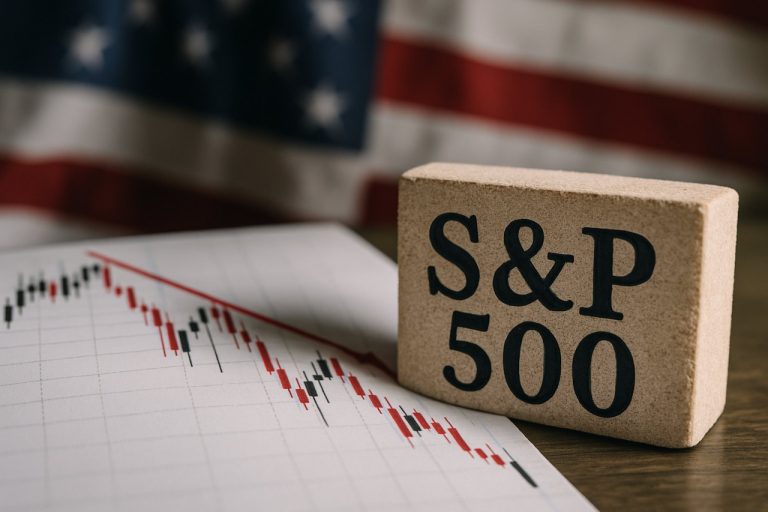
- Retail giants like Target, Walmart, and Home Depot are facing significant pressure from tariffs, forcing them to balance cost increases without driving up consumer prices.
- Target is using behind-the-scenes strategies to offset tariffs, such as negotiating with suppliers and changing supply chains, but acknowledges shrinking margins.
- Home Depot plans to avoid broad price hikes, but warns some products might disappear or be replaced by new imports.
- Walmart has signaled possible price increases, sparking criticism from the White House, while Amazon and Mattel have faced their own tariff-related challenges.
- While tariffs have recently been reduced on some Chinese goods, new blanket taxes and ongoing trade tensions keep the outlook uncertain for both retailers and shoppers.
Shoppers strolling the glossy aisles of Target or hunting for deals at Walmart may not sense the ripples underfoot, but beneath the tidy displays, America’s retail titans are battling invisible economic headwinds. The sheer scale of this new trade war has forced executives to juggle razor-thin margins while resisting the urge to pass higher costs to already anxious customers.
On a humid Wednesday morning, Target became the latest giant to lower its yearly outlook, quietly diminishing the likelihood of immediate price hikes tied to tariffs. CEO Brian Cornell assured investors the chain was “working hard to offset the vast majority of the tariffs,” wielding a toolkit of behind-the-scenes strategies to shield the shopper from sticker shock. Negotiating emphatically with suppliers, adjusting purchasing timelines, and charting new logistical routes, Target aims to shield customers—but the margin for error grows slimmer by the day.
Across town, Home Depot echoed a similar stance, vowing not to pursue general price increases despite the specter of costlier imported goods. “We have to be selective,” said an executive, hinting some items could vanish from shelves if their prices soar beyond reason. Still, customers may soon notice certain familiar products replaced with alternatives sourced from new corners of the globe.
- Walmart—the world’s undisputed retail giant—has already warned of price increases, drawing the ire of the White House and President Trump himself, who suggested in a blunt social media post that Walmart should simply “EAT THE TARIFFS.”
- Amazon managed to sidestep a public feud after rumors circulated that it would itemize tariff impacts for its Amazon Haul buyers. After a tense exchange, founder Jeff Bezos personally reassured the administration that was never the retailer’s intent.
- Mattel, the famed toymaker behind Barbie, faced direct threats of a 100% tariff when it announced certain toys would get more expensive.
Trump continues to insist that foreign countries shoulder the burden of tariffs. Yet, in the intricate choreography of global trade, U.S. companies are the ones signing the checks—paying steep levies as their goods cross national borders. Under the current reprieve, U.S. tariffs on many Chinese imports have dropped from 145% to 30%, with a new 10% blanket tax hitting all global imports.
Retail leaders walk a razor’s edge, wary of inflaming the administration or losing the loyalty of shoppers wary of inflation. At Walmart, CEO Doug McMillon confirmed that while the company and its suppliers have absorbed some of the tariff pain, “given the magnitude” it’s not possible to swallow all the costs without hiking prices.
From the shimmering floors of America’s superstores, a high-stakes chess match continues in the boardrooms. Retailers are determined to keep shelves stocked and shoppers satisfied—at least for now. But with every new tariff, the stakes climb higher, with shoppers and stores alike bracing for what could be the next big move on the retail chessboard.
Tariffs & Turmoil: What Big Retail Chains Aren’t Telling You!
-
Pros:
Target and
Home Depot strive to shield customers from direct price hikes, absorbing costs and adjusting supply chains to maintain affordability.Behind-the-scenes negotiations and innovative logistics help keep shelves stocked with alternatives, minimizing empty aisles and maintaining customer loyalty.
-
Cons & Limitations:
Tariffs create “invisible” costs that retailers like
Walmart can only absorb for so long; customers may eventually face higher prices or fewer choices.Critical product lines (such as beloved
Mattel toys) are at risk of sharp cost increases or disappearing from shelves altogether if alternatives can’t be found.Some relief is temporary: as U.S. tariffs yo-yo—from 145% to 30%, then a 10% global blanket tax—uncertainty makes it hard for retailers to plan long-term pricing strategies.
-
Controversies:
Presidential pressure mounts for
Walmart to “eat the tariffs,” fueling debates over who truly pays the price—foreign exporters, U.S. corporations, or consumers.Amazon faced scrutiny over rumors it would make tariff impacts transparent in its pricing, sparking tensions within the retail and political landscape.
The Trade War’s Next Moves: What Will Happen to Retail in the Coming Years?
-
Accelerating Supply Chain Shifts:
Major retailers like Target, Walmart, and Home Depot are expected to fast-track the diversification of their supplier base. Companies will increasingly source goods from emerging markets beyond China to avoid heavy tariffs and ensure price stability.
-
More Price Adjustments on Everyday Goods:
With tariffs on global imports at 10% and rising, retailers such as Walmart may be forced to pass on more costs to consumers. Experts predict price increases will first hit seasonal items and toys from companies like Mattel, and gradually affect more product categories if the trade war continues.
-
Increased Use of Technology and Automation:
To offset higher costs, leaders at Amazon and other big-box retailers will expand investments in supply chain automation and AI-driven inventory management, further streamlining operations and helping maintain margins despite economic uncertainty.
-
Direct-to-Consumer and Private Labels Rise:
Target and other retailers are forecasted to expand their affordable in-house brands, offering cost-competitive alternatives to imported products and keeping value-conscious shoppers engaged.
-
Potential for Increased Political Pressure:
As cost-of-living concerns mount, expect further public clashes between retail giants and policymakers. Leaders at Walmart and Amazon will likely be drawn into debates on who should “eat the tariffs” as election cycles approach.
-
Consumer Habits Continue to Evolve:
With ongoing price volatility, shoppers will rely more on online price comparison tools and discount apps found through platforms like Amazon and Walmart, accelerating the digital transformation of retail.
Forecast: If tariff tensions remain high through the next few years, experts believe more frequent price increases and shifts to alternative product lines will become the norm. Retailers able to quickly adapt their supply chains and leverage new technology are most likely to thrive in this volatile landscape.



